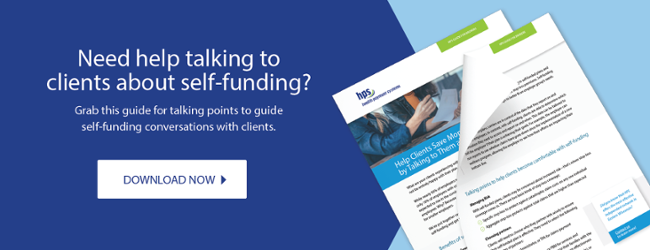
There are many benefits for employers choosing to pay health care claims themselves, rather than opting for fully-insured health plans. When helping employers decide what type of self-insurance is right for them, you must first help them understand the differences between level-funding and self-funding. This blog post will detail where level-funding wins over self-funding, to help you help your clients make the best choices for their benefit plans.
Benefits Unique to Level Funding
Predictability and Cash Flow
With level-funding, the employer makes equal deposits throughout the year, making it easy to plan costs ahead of time and not get caught off-guard by large claims. A TPA provides a customized monthly amount to the employer for the plan year based on three things: claims allowance, TPA fee and stop-loss premiums. This means that the employer never has to pay more than the predetermined monthly amount.
Risk Management
If extremely large individual or group claims come in, specific or aggregate stop-loss covers them. Stop-loss is an extremely important part of a level-funded plan.
At the end of the plan year, if claims paid out are less than what the employer has paid in, the difference is returned to the employer. Some plans may retain a portion of the savings as an additional administrative fee. Unlike with fully-insured plans, the employer is rewarded with monetary reimbursement when claims costs are lower than expected for the contract period.
Why to Suggest Level-Funding to Clients
Level funding differs from self-funding in that the employer is never responsible for more than the monthly payment determined ahead of time, while with self-funding, there is potential for the employer to be responsible for additional costs. Level funding may cost more upfront per month for the employer than self-funding throughout the plan year. At the end of the year, however, if funds for claims payment have not been used, they are returned to the employer, so this plan type still offers potentially significant cost savings over fully-insured plans, with lower risk than self-funded plans.
Level-funding can be a great option for employers, especially small employers with healthy employees, to save money on benefits. Make sure your clients know what level-funding is and the benefits it could offer them when helping them plan for open enrollment.
To help you dig deeper into these conversations with clients, download our free guide on helping clients save money with self-funding.




